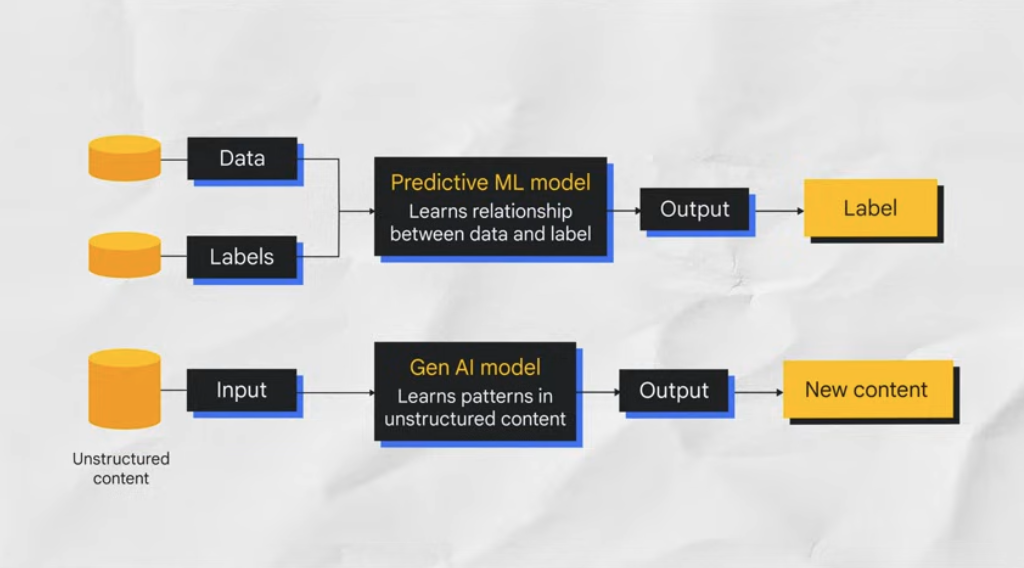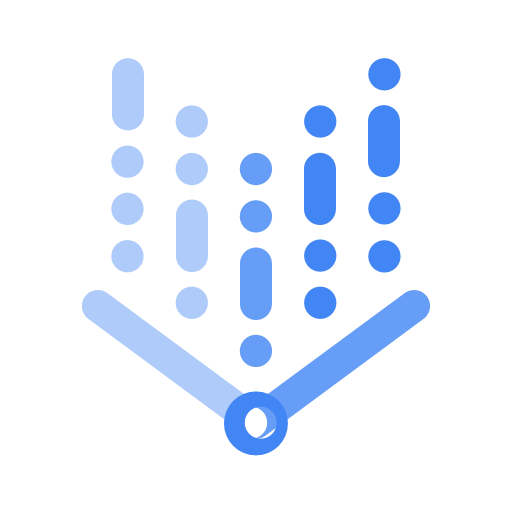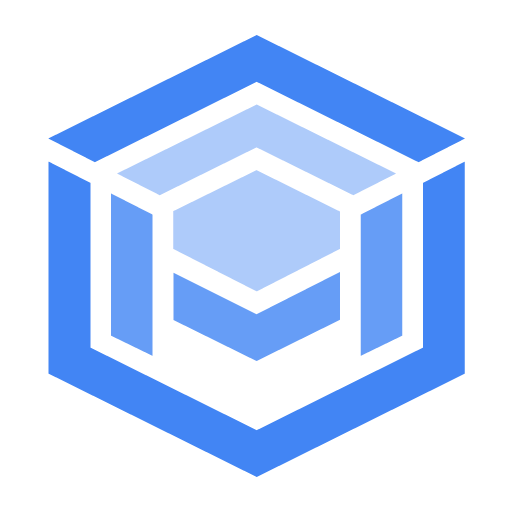Artificial intelligence (AI): a simple-to-understand guide
Ever wonder how your phone can recognize your face, a streaming service knows exactly what movie you’ll love next, or how a car can drive itself? The answer is artificial intelligence (AI).
Far from being science fiction, or limited to just the chatbots we know and enjoy, AI is part of our daily lives in countless ways. It's one of the most transformative technologies of our time, acting as the engine behind modern innovation. But what does "Artificial Intelligence" actually mean?
Key takeaways
Let's break AI down in a way that everyone can understand.
- What it is: AI is a field of computer science focused on creating smart machines that can perform tasks that typically require human intelligence, like learning, reasoning, and problem-solving.
- How it works: AI systems learn from vast amounts of data, identifying patterns to make predictions or decisions without being explicitly programmed for every scenario. Think of it as teaching a computer by showing it a million examples instead of writing a million rules.
- Where you see it: You're using AI every day in navigation apps like Google Maps, personalized recommendations on shopping sites, spam filters in your email, and virtual assistants like Gemini Live.
- Why it matters: AI helps us solve some of the world's toughest challenges—from accelerating medical research to creating more efficient supply chains and tackling climate change.
What is artificial intelligence (AI)?
Artificial intelligence (AI) is a set of technologies that empowers computers to learn, reason, and perform a variety of advanced tasks in ways that used to require human intelligence, such as understanding language, analyzing data, and even providing helpful suggestions. It’s a transformational technology that can bring meaningful and positive change to people and societies and the world.
It encompasses many different disciplines, including computer science, data analytics and statistics, hardware and software engineering, linguistics, neuroscience, and even philosophy and psychology.
AI is about teaching computers to do the amazing things our own brains can do, from understanding the world around them to learning new things and even coming up with fresh ideas. For instance, AI is used in optical character recognition (OCR) to pull text and data from various images and documents. This process transforms unstructured content into structured, business-ready data, helping uncover valuable insights.
How does AI work?
Artificial intelligence techniques, though diverse, all fundamentally rely on data, algorithms, and computational power. AI systems learn and improve through exposure to vast amounts of data, identifying patterns and relationships that humans might miss. This data serves as the training material, the quality and quantity of which are crucial for the AI's performance.
As mentioned earlier, AI isn't a single technology but a broad field encompassing several key areas:
- Machine Learning (ML): This is a type of AI where systems learn from data to identify patterns and make predictions or decisions without direct programming. Imagine teaching a computer to recognize a bird by showing it thousands of bird pictures; it learns what a bird looks like on its own.
- Deep Learning (DL): A subfield of ML, deep learning uses artificial neural networks with many layers (hence "deep") to learn from data. These networks are inspired by the structure of the human brain and are particularly good at complex tasks like image and speech recognition.
- Natural Language Processing (NLP): NLP enables computers to understand, interpret, and generate human language. This is what powers voice assistants like Siri and Alexa, translation services, and chatbots.
- Computer Vision: This area allows computers to "see" and interpret visual information from the world, such as images and videos. It's used in everything from facial recognition to self-driving cars.
Want to learn how to get started with AI? Take the free beginner's introduction to generative AI.
Types of artificial intelligence
Artificial intelligence can be organized in several ways, depending on stages of development or actions being performed.
AI types of capability
This classification defines AI models based on their intelligence level and problem-solving abilities.
- Artificial Narrow Intelligence (ANI): This is the only form of AI that currently exists. ANI models are designed to perform a single, specific task, such as identifying images, engaging in chat, or filtering emails. Examples include voice assistants, facial recognition technology, and generative AI models like Gemini and other large language models (LLMs). Despite its name, ANI does not possess reasoning or self-awareness; instead, it combines data with an algorithm to make predictions within predefined parameters. While ANI offers many benefits, it also carries risks, as poor training data can lead to biased or inaccurate outputs, which can be critical in applications like loan approvals, hiring decisions, and predictive policing. Cybercriminals can also potentially exploit ANI to create sophisticated AI-driven scams.
- Artificial General Intelligence (AGI): This is a proposed future step in AI technology. Theoretically, AGI would be capable of performing a broad range of tasks and would utilize human-like reasoning to learn, adapt, and improve. AGI does not yet exist. Unlike ANI, AGI is expected to be adaptive, autonomous, and capable of learning from its actions. Fictional examples include droids from Star Wars. However, AGI may raise significant safety and ethical concerns, as malicious actors could program AGI with harmful intent, leading to potentially limitless destructive capabilities if unregulated.
- Artificial Superintelligence (ASI): This is the most advanced theoretical form of AI. ASI would be a self-aware entity operating beyond human control, significantly surpassing human intelligence in reasoning, creativity, and even emotional intelligence. Like other forms of AI, there are concerns that ASI could pose an existential threat to humanity, with some AI researchers suggesting a non-negligible chance of extremely bad outcomes, including human extinction.
AI types by functionality
This classification categorizes AI based on how it operates and interacts in specific contexts.
- Reactive machines: Limited AI that only reacts to different kinds of stimuli based on preprogrammed rules. It lacks memory and therefore cannot learn from new data. A notable example is IBM’s Deep Blue, which defeated chess champion Garry Kasparov in 1997.
- Limited memory: Most modern AI is limited memory. It can use memory to improve over time by training on new data, typically through an artificial neural network or other training model. This memory is short-term; once a session ends, the memory often resets. Examples include self-driving cars observing other vehicles and chatbots like Gemini remembering previous messages in a conversation.
- Theory of mind: Theory of mind AI doesn't currently exist (yet), but research is ongoing into its possibilities. It describes AI that can emulate the human mind and have decision-making capabilities equal to that of a human, including the ability to recognize and remember emotions and react in social situations as a human would.
AI myth versus reality
Let's clear up some common misconceptions about AI.
Myth: AI is conscious and has feelings
Reality: AI systems can process and even simulate emotions, but they do not possess consciousness, self-awareness, or genuine feelings. They are complex pattern-matching machines.
Myth: AI is always objective and unbiased
Reality: AI is only as good as the data it's trained on. If the data reflects human biases, the AI will learn and perpetuate them.
Myth: AI will take over all human jobs
Reality: While AI will certainly automate many tasks, it's more likely to augment human capabilities, freeing us up for more creative, strategic, and empathetic work.
Benefits of AI
Automation
Automation
AI can help automate workflows and processes or work independently from a team of workers. For example, AI can help automate aspects of cybersecurity by continuously monitoring and analyzing network traffic. Similarly, a smart factory may have many different kinds of AI in use, such as robots using computer vision to navigate the factory floor or to inspect products for defects, create digital twins, or use real-time analytics to measure efficiency and output.
Reduce human error
Reduce human error
AI can minimize manual errors in data processing, analytics, assembly in manufacturing, and other tasks through automation and algorithms that follow the same processes every single time.
Eliminate repetitive tasks
Eliminate repetitive tasks
AI can be used to perform repetitive tasks, freeing up people to work on more complex problems. Whether it's analyzing data, verifying documents, transcribing phone calls, moderating content, or answering straightforward customer questions such as "Where are you located?" AI excels at automating these repetitive or tedious job functions.
Fast and accurate
Fast and accurate
AI can process more information more quickly than a person, finding patterns and discovering relationships in data that someone might miss.
Infinite availability
Infinite availability
AI isn't limited by time of day, the need for breaks, or other human needs. When running in the cloud, AI and machine learning can be "always on," continuously working on their assigned tasks.
Accelerated research and development
Accelerated research and development
The ability to analyze vast amounts of data quickly can lead to accelerated breakthroughs in research and development. For instance, AI can help with predictive modeling for potential new pharmaceutical treatments or with quantifying the human genome.
AI in action: transforming our world
AI's influence is vast and growing, touching nearly every aspect of our lives and industries. Here’s where you can see it making a difference:
- In your daily life: Your smartphone's virtual assistant, personalized recommendations on streaming services, spam filters in your email, and navigation apps like Google Maps all rely on AI to function.
- Healthcare: AI is revolutionizing medicine by helping doctors diagnose diseases earlier through the analysis of medical images, personalizing treatment plans, and dramatically accelerating drug discovery.
- Transportation: Autonomous vehicles use AI for navigation, object detection, and real-time decision-making to drive safely.
- Business Operations: Companies use AI for everything from customer service chatbots and fraud detection in finance to optimizing supply chains and personalizing marketing campaigns.
- Entertainment: In video games, AI creates more realistic and challenging characters. In content creation, generative AI can now compose music, write scripts, and create stunning visual art.
Want to see more use cases for AI? Find 1,000+ real-world gen AI use cases over at the Google Cloud Blog.
The history of AI
The idea of machines that can think for themselves isn't new. Concepts of artificial beings with intelligence stretch back decades, however, the modern field of AI truly began to take shape in the mid-20th century. Let’s take a look at the history of AI as we know it:
- The Seeds of AI (1940s-1950s): The invention of programmable computers in the 1940s sparked imaginations. In 1950, Alan Turing proposed the "Turing Test," a way to gauge if a machine could exhibit intelligent behavior indistinguishable from a human. This was a critical philosophical and scientific step.
- The Birth of a Field (1956): The Dartmouth Summer Research Project, organized by pioneers like John McCarthy, is widely considered the official birth of AI as an academic discipline. It was here that the term "artificial intelligence" was coined.
- Early Successes and Challenges (1960s-1970s): Researchers developed early AI programs, like ELIZA, a chatbot that could simulate conversations, and Shakey the Robot, one of the first robots to reason about its environment. However, the complexity of creating true intelligence led to periods of reduced funding and progress, often called "AI Winters."
- Revival and Growth (1980s-2000s): The development of expert systems and later, the rise of machine learning, breathed new life into AI research. Milestones like IBM's Deep Blue defeating a chess grandmaster in 1997 showcased AI's growing capabilities.
- The Modern AI Boom (2010s-Present): Advances in computing power, the availability of massive datasets, and breakthroughs in deep learning, especially with neural networks, have fueled the current AI revolution. This era has seen the emergence of powerful tools that are transforming industries.
The cutting edge: generative AI, LLMs, and the rise of AI agents
In recent years, two of the most exciting advancements in AI have been generative AI and large language models (LLMs). However, the frontier is rapidly expanding with the emergence of AI agents and agentic AI, which represent a significant step towards more autonomous and capable AI systems.
- Generative AI: This is a type of AI that doesn't just analyze data; it creates new content. Think of it as an AI artist, writer, or even coder. Generative AI learns the patterns and structures within vast amounts of data (text, images, code, and more.) and then uses that knowledge to produce entirely new, original content based on prompts. Tools like DALL-E for images and ChatGPT for text are prime examples.
- Large Language Models (LLMs): These are the engines powering many of today's most sophisticated AI applications, especially in text-based tasks. LLMs are large AI models trained on massive datasets of text and code. They excel at understanding, generating, and manipulating human language. Because they've processed so much information, they can answer complex questions, summarize documents, translate languages, write creative content, and even generate computer code. These models are becoming increasingly capable, even developing "emergent abilities" like solving math problems and writing code, though it's always wise for developers to review and validate AI-generated code. LLMs are also becoming multimodal, meaning they can understand and process not just text, but also images, audio, and video.
- AI agents: These are AI systems designed to perceive their environment, make decisions, and take actions to achieve specific goals. Unlike a simple chatbot that responds to a direct command, an AI agent can:
- Plan: Break down a complex goal into a series of smaller, manageable steps
- Reason: Use its knowledge and understanding to make decisions at each step
- Act: Interact with digital or even physical environments (through APIs or robotic interfaces) to carry out its plan
- Learn/Adapt: Potentially learn from its experiences to improve its performance over time
- Agentic AI: This refers to the capability of AI systems to operate autonomously in the manner described above.
For software developers, this may be particularly interesting because AI agents can be programmed to interact with software development tools, APIs, and even existing codebases. This opens up possibilities for AI to assist in more complex development tasks, such as automatically testing new features, refactoring large sections of code, or even managing project workflows. The ongoing research is focused on making these agents more reliable, efficient, and safe as they gain more autonomy.
Take the next step
Start building on Google Cloud with $300 in free credits and 20+ always free products.
Need help getting started?
Contact salesWork with a trusted partner
Find a partnerWant to hear from us?
Join the monthly newsletter
















